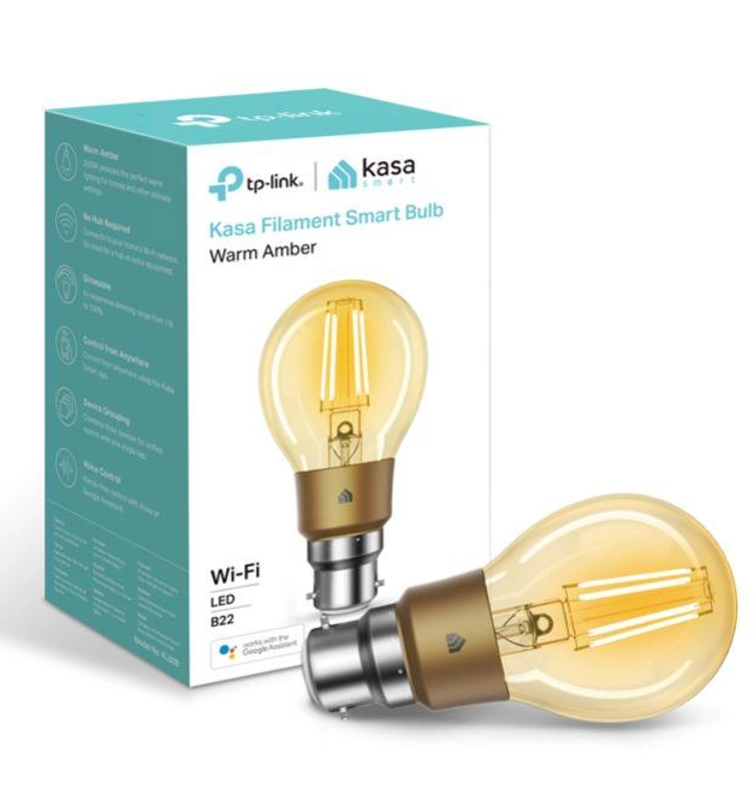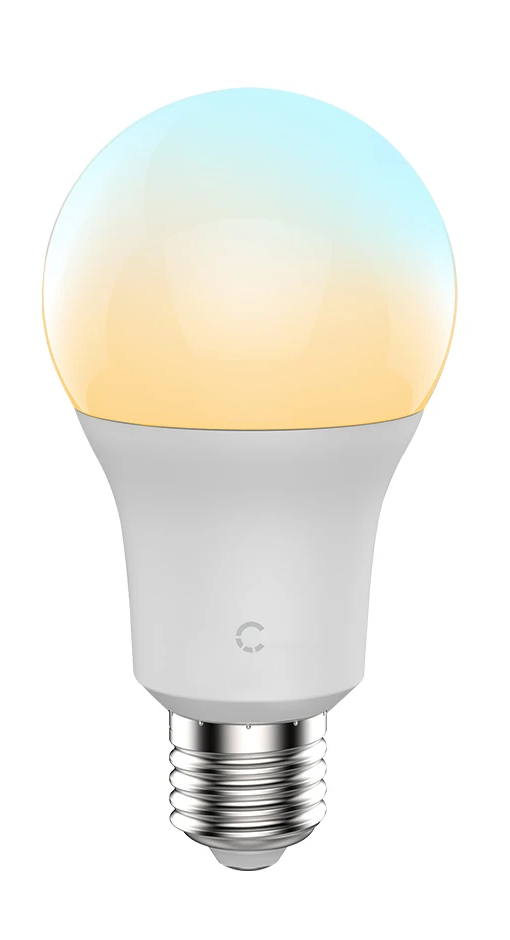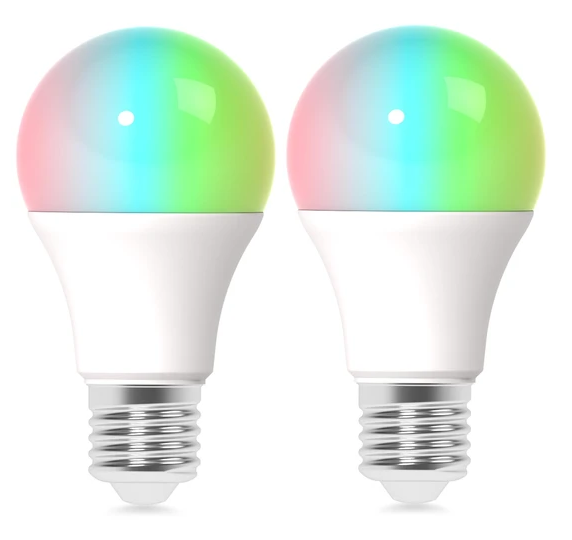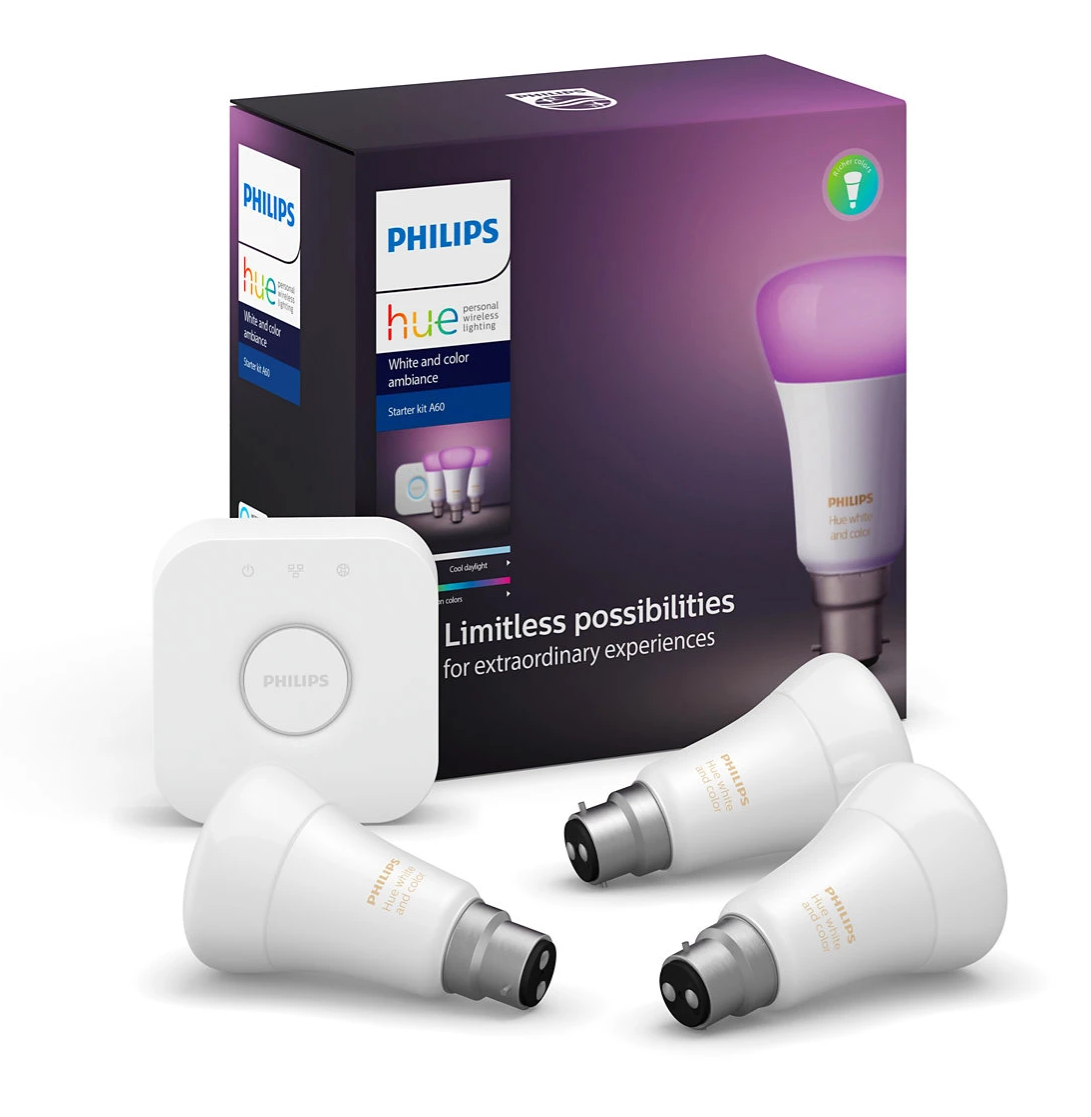Smart light bulbs can be a great asset in your home. They provide the convenience of remote and automated control, allow for customisation of lighting set-ups, and can help drive down your electricity bills. However, before lighting up your household with a luminous array of smart LEDs, it’s worthwhile weighing up what exactly you require.
Whether you’re considering a few Bluetooth-enabled bulbs, to a wider home network that integrates smart bulbs with other smart devices, it pays to plan ahead. It may simply be a matter of starting out small, assessing the range of features on offer, and then building as you go.
In this article we cover:
- What is smart lighting?
- How do smart light bulbs work?
- What are the features?
- The benefits of smart lighting
- Getting started
- What options are out there?

What are smart light bulbs?
A smart bulb is a regular LED light bulb that has been equipped with smart wireless technologies. This paves the way for app and voice control via compatible smart devices, such as a smartphone, tablet or smart speaker.
This wireless connectivity enables a range of features centred around remote operation. From basic lighting adjustments through to more advanced home automation applications (see our list of smart bulb features below).
Like regular bulbs, smart bulbs are available in a variety of styles and sizes, feature standard base fittings (such as a bayonet or screw fitting), and can be used with a traditional switch. The key difference is connectivity.
How do smart light bulbs work?
To use the various smart features available with a smart bulb you need to pair it with a compatible smart device. To do that you must download an accompanying app that assists with the initial set-up and operation.
The type of wireless technology used by a smart bulb will determine how it connects with your smart device. The commonly used technologies include:
- Bluetooth – provides for a direct connection with your smart device, allowing for wireless control at home when within range
- Wi-fi – establishes a connection with your router, which then facilitates the connection to your smart device
- Zigbee – facilitates multiple connections over a mesh network, with an additional device, known as a smart hub, typically required
The range of features available with a smart bulb depends on the type of wireless technology used (see below for further information). Some smart bulbs offer more than one connectivity option.
Smart light bulb features
Smart bulbs typically incorporate a range of basic features, along with more advanced options. App control via a smart device will likely be one of your go-to methods of operation. While a digital assistant, such as Google Assistant or Alexa, can allow for voice operation.
Basic smart bulb features include:
- Dimming – is a function provided by many smart bulbs, meaning you won’t require a dimming switch to adjust brightness
- Ambient lighting – from warm to cool white LED lighting, allowing you to set the shade best suited to individual rooms
- Change colours – some smart bulbs offer up a palette of colour choices, allowing for additional control over a room’s atmosphere.
Meanwhile, more advanced smart bulb functions can encompass:
- Away from home control – allowing for operation of a smart bulb from anywhere via an internet connection
- Grouping – allowing you to group bulbs together and control them as one (for instance, controlling lights room by room)
- Schedules – such as setting a timer to turn a smart bulb on or off, or setting your smart bulb to gradually brighten in the morning or dim at night
- Smart device integration – for instance, pairing a smart bulb with a motion sensor to turn on/off the light whenever someone enters/exits a room
As we explore in the following section, it’s important to consider which smart bulb features you will be using primarily. Doing so will help establish both your budget and wider household network.

The benefits of smart lighting
Smart lighting can become a core part of your home set-up. It offers convenience and control, allowing you to turn lights on and off, up and down, and even change the colours. All without having to leave your bed or sofa. More advanced features such as timers, sensors, grouping and scheduling can reduce power consumption, and bring down electricity bills.
For example, if your living room has several lights that all operate on one switch, smart bulbs can allow you to control each bulb individually. Or you can set certain rooms to run on a sensor, helping avoid moments when you forget to turn lights off after leaving a room. For children who are afraid of the dark, you can set a timer, where the light switches itself off once your child is safely fast asleep.
Smart lighting not only offers convenience and greater control, but can be a great way of saving on your electricity costs.
Compare electricity providers with Canstar Blue
Setting up smart lighting: weighing up what you require
Prior to setting up smart lighting in your home, it’s worthwhile running through the various features on offer from different models. Consider the types of technologies being employed and how you plan to connect.
From a single Bluetooth-enabled bulb, to a smart bulb kit with a smart hub, prices can vary quite dramatically. And it may well be a matter of testing the waters before going all-in on a smart lighting system.
In weighing up your options, keep the following in mind:
- Basic functions – if you’re simply keen on using a few key features while at home, Bluetooth-enabled smart bulbs will likely be a good (and typically cheaper) option, allowing you to directly connect when in range via a smart device
- Advanced applications – for more comprehensive features, you’ll need smart bulbs that connect via wi-fi to your router, or which connect to a smart hub (which will, in turn, connect to your router)
- Compatibility – most smart bulbs feature Android and iOS smartphone compatibility (including the below bulbs). However, you’ll need to ensure your software version is compatible. Also, check compatibility with any other smart devices you plan on using
- Smart hubs – will add an extra initial cost to your set-up. However, they can facilitate communication between the range of smart devices on your home network, acting as a centralised control centre. This paves the way for a variety of applications
While smart bulbs use minimal bandwidth, you should keep in mind the cumulative requirements of all the devices on your home network in ensuring your broadband functions smoothly.
Smart light bulb options
The following is a selection of smart light bulbs, from single bulbs to a starter kit. It’s worthwhile shopping around, and consulting with lighting experts in determining what will be best for your household.
*Further information on pricing can be found at individual retailer websites. This should be used as a price guide and not considered an actual quote.

TP-Link Kasa Filament Smart Bulb, Soft White A60 (E27 or B22) $18*
The TP-Link Kasa Filament Smart Bulb, Soft White (available with an E27 or B22 fitting) combines a classic look with modern LED technology. Features include:
- Lighting options – the 2700K temperature is designed for a range of environments. Users are able to adjust the light to their required level of brightness
- Dimming – yes
- Automation and integration – set lighting schedules and integrate with other smart devices
- Away from home – operate remotely via an internet connection
- Wireless connection – Wi-fi 4
- App and voice control – app control via the Kasa Smart app; voice control via compatible devices using Alexa or Google Assistant

Cygnett Smart Wi-Fi LED Bulb A60 Ambient White (E27 or B22) $32*
The Cygnett Smart Wi-Fi LED Bulb A60 Ambient White (available with an E27 or B22 fitting) is designed to deliver users control over a range of tasks. Features include:
- Lighting options – adjust the lighting to set the mood, choosing between warm lighting (yellow) and cool lighting (blue)
- Dimming – yes
- Automation and integration – set lighting schedules and integrate with other smart devices
- Away from home – operate remotely via an internet connection
- Wireless connection – Wi-fi 4.
- App and voice control – app control via the Cygnett Smart app; voice control via compatible devices using Alexa, Google Assistant or Siri

Lenovo Smart Colour Bulb A60 (E27 or B22) 2 pack $80*
The Lenovo Smart Colour Bulb 2 pack (available with an E27 or B22 fitting) is part of Lenovo’s Smart Home Essentials range. Features include:
- Lighting options – adjustable colour, temperature and brightness
- Dimming – yes
- Automation and integration – set lighting schedules and integrate with other smart devices
- Away from home – operate remotely via an internet connection
- Wireless connection – Wi-fi 4
- App and voice control – app control via the Lenovo Link Mobile app; voice control via compatible devices using Alexa or Google Assistant

Philips Hue Starter Kit A60 (E27 or B22) $310*
The Philips Hue Starter Kit (available with an E27 or B22 fitting) includes three colour bulbs and a Hue Bridge (which can handle up to 50 lights). Features include:
- Lighting options – over 16 million colours and over 50,000 shades of warm-to-cool white light
- Dimming – yes
- Automation and integration – set lighting schedules and integrate with other smart devices
- Away from home – operate remotely via an internet connection
- Wireless connection – Bluetooth and Zigbee
- App and voice control – app control via the Philips Hue app or Philips Hue Bluetooth app; voice control via compatible devices using Alexa, Google Assistant or Siri
Compare broadband with Canstar Blue
As your smart home’s network grows, so do the requirements. So it’s essential to have fast broadband, at a great price.
To help you get a clearer picture of broadband providers in NZ, Canstar Blue rates all the big providers annually. We survey thousands of broadband customers and ask them to score their providers across categories including Value for Money, Network Performance and Customer Service.
Canstar Blue’s latest review of NZ internet providers compares NOW, 2degrees, Bigpipe, Contact, MyRepublic, Nova Energy, Orcon, Slingshot, Spark, Stuff Fibre, Trustpower and Vodafone, and awards the best our 5 Star rating:
^ By clicking on a brand or 'details' button, you will leave Canstar Blue and be taken to either a product provider website or a Canstar Blue NZ brand page. You agree that Canstar Blue NZ’s terms and conditions apply (without limitation) to your use of this service,to any referral to a product provider from our website, and any transaction that follows. Canstar Blue may earn a fee for referrals from its website tables, and from sponsorship (advertising) of certain products. Payment of sponsorship fees does not influence the star rating that Canstar Blue awards to a sponsored product. Fees payable by product providers for referrals and sponsorship may vary between providers, website position, and revenue model. Sponsorship fees may be higher than referral fees. Sponsored products are clearly disclosed as such on website pages. They may appear in a number of areas of the website such as in comparison tables, on hub pages and in articles. Sponsored products may be displayed in a fixed position in a table, regardless of the product’s rating, price or other attributes. The table position of a sponsored product does not indicate any ranking, rating or endorsement by Canstar Blue. See How we are funded for further details.
Canstar Blue NZ research finalised in May 2024, published in June 2024.
See Our Ratings Methodology
The table above is an abridged version of our full research, so to find out more about NZ’s best broadband providers, just click on the big button at the bottom of this story.
Compare broadband providers for free with Canstar!
About the author of this page
![]() This report was written by Canstar author Martin Kovacs. Martin is a freelance writer with experience covering the business, consumer technology and utilities sectors. Martin has written about a wide range of topics across both print and digital publications, including the manner in which industry continues to adapt and evolve amid the rollout of new technologies
This report was written by Canstar author Martin Kovacs. Martin is a freelance writer with experience covering the business, consumer technology and utilities sectors. Martin has written about a wide range of topics across both print and digital publications, including the manner in which industry continues to adapt and evolve amid the rollout of new technologies
Enjoy reading this article?
You can like us on Facebook and get social, or sign up to receive more news like this straight to your inbox.
By subscribing you agree to the Canstar Privacy Policy


Share this article